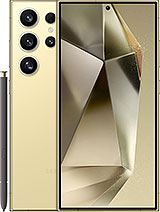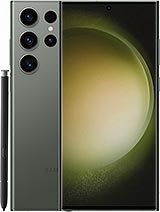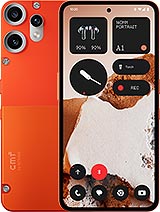Samsung Galaxy S24 Ultra vs. Samsung Galaxy S23 Ultra

The ultimate smartphone got (predictably) even better this year - Samsung updated the Galaxy Ultra, giving the 2024 model a tweaked design with a tougher build, a superior display, and a new telephoto camera, and also some new AI-based features. But does all this make the Galaxy S24 Ultra the better buy when compared to the now heavily discounted S23 Ultra? We'll go over the usual categories to try to answer that.
Table of Contents:
For starters, you can compare the complete specs sheets or directly continue with our editor's assessment in the following video or in the text further down below.
Size comparison
The two handsets are similar in size and overall presence, and they carry classic Galaxy Note traits - blocky rectangles with little to no rounding of the corners. That said, the new model takes this a step further by also removing whatever traces were still left from display curves - the S24 Ultra has a flat panel with all the benefits to usability and aftermarket protection you can think of.
Not that the 2024 Ultra should need further protection, though - it's got a sheet of the latest Corning Gorilla Armor on each side, and a titanium frame surrounds it, so logic points to it being tougher than the previous generation's Victus 2 + aluminum combo. Both phones are IP68 rated for up to 30 minutes under as much as 1.5m of water, so even if you opt for the S23 Ultra, you should be fine in this respect.
The dust and water resistance applies to the S Pen too, and both phones are equally well sealed with the stylus out of the silo too. The S Pen itself is also unchanged in its functionality or operation - nothing in it will make you want the S24 Ultra more than the previous model.

The new model is ever so slightly wider - perhaps as a result of the flattening of the display - and marginally thinner, but overall, it's more or less the same phone. A gram or two of weight difference will also not be felt. In any case, these are very large and quite heavy smartphones, and they make no excuses for it.
Display comparison
The S24 Ultra and S23 Ultra have very similar displays but are also somewhat different in a few ways. Both are 120Hz-capable adaptive refresh rate OLEDs with a 6.8-inch nominal diagonal and a 1440p resolution. Neither does Dolby Vision, but HDR10+ is on both spec sheets.
The S23 Ultra won't leave you wanting for brightness, with a 1,274nits result in our test, but the new model is brighter still, at 1,447nits. Samsung specifies peak brightness at 1,750nits on the old model and 2,600nits on the S24 Ultra.
The more significant differences lie elsewhere, though, and we already mentioned them in the previous section. The S24 Ultra benefits from Corning's latest advancements in glass technology and features a noticeably less reflective material - some consider it a game-changer, others just acknowledge without making a fuss. It may be worth checking it out in person before deciding, in case you end up in the first category. Try not to get us wrong - it's certainly great to have, and probably that's the way of the future, but the S23 Ultra isn't bad itself, simply for being a bit more reflective.
 Galaxy S24 Ultra (left) next to Galaxy S23 Ultra
Galaxy S24 Ultra (left) next to Galaxy S23 Ultra
The other bit that deserves reiterating is that the new flat display and cover glass will be appreciated by all the vocal curved-screen opponents and even the curved-screen fans for whom the novelty has worn off. The flat glass also means easier application and a wider availability of third-party glass screen protectors, though that, in turn, will rob you of the reflectivity advancements.
It's not all roses with the S24 Ultra, and a few issues with its display quickly got illuminated once the phone started shipping in large numbers. One of them is the graininess that can be observed at low brightness levels (if you have the tools) and really more readily seen with the naked eye at minimum or very close to minimum brightness - and very dim or no ambient light to go with it. It's not a great feeling to have a flawed display in what should be the absolute best (non-bendy) Galaxy.

Galaxy S24 Ultra (left) next to Galaxy S23 Ultra
The other thing was the relatively muted color rendition, even in the Vivid color mode, though that has since been addressed with a firmware update and the inclusion of a Vividness slider.
Battery life
Both Galaxy Ultras are powered by 5,000mAh batteries - the Ultra didn't get a bump in capacity like both regular models did this year.
Even with the same capacity, the S24 Ultra showed improvements in all three of the routines that are carried out with the display on - tiny ones, but improvements nonetheless - while the call test result ended up being somewhat shorter. Overall, the new generation is slightly better in terms of endurance than the previous model, but the difference is hardly consequential and certainly not something that can help sway things in the S24 Ultra's favor.
Charging speed
We've come to expect unimpressive charging speeds from Samsung flagships, and the S24 Ultra isn't the model that will change that sentiment. But while we could be complaining all day about it, the fact remains that the old Ultra is no worse than the new one - slightly better, in fact, in the "time to 100%" metric.
Beyond wired charging, both the S24 Ultra and S23 Ultra support 15W Qi/PMA wireless charging. Both support 4.5W reverse wireless charging, too.
Speaker test
The S24 Ultra and the S23 Ultra feature hybrid stereo speaker setups. There is one speaker firing out of the bottom of the handset, and another one at the top end, which outputs sound forward through a slit that also serves as the earpiece.
Both phones fall into the 'Very Good' category for loudness in our testing and have minimal differences in how they sound. Once again, this is not in any way a generational leap that can make you want the S24 Ultra over the previous one.
You can compare how the two phones sound in controlled acoustic conditions with the samples below. Just make sure you have your headphones on and the volume is at max level.
Performance
Things do start to look a little better for the S24 Ultra when it comes to raw computing power. The new Snapdragon is more powerful than the old Snapdragon and will remain relevant for an extra year. The fact that the S24 Ultra has 12GB of RAM in its base version (8GB on the S23 Ultra) is also worth considering.
With that in mind and the S24 Ultra's promised 7 years of software support (both major OS updates and security patches), the new model is the better bet if you'd rather not change phones for as long as possible - the S23 Ultra has already exhausted one of its promised 4 OS updates.
In the here and now, the S24 Ultra posts benchmark scores 20% to 40% higher than the S23 Ultra. It may not translate directly into real-world benefits, but if you're getting a Galaxy Ultra for productivity, faster is always better, even if the improvement may not be immediately noticeable.
There is also the matter of the new Galaxy AI software features, which Samsung introduced on the S24 series. We won't be considering those in detail in this comparison because Samsung has promised to deliver most, if not all, of these features to the Galaxy S23 as well, with an update in March 2024.
Camera comparison
Samsung hasn't changed much with the S24 Ultra's camera system, but it's not all the same either. A new, large-sensor 5x telephoto camera replaces the 10x module of the last generation - that way, you'd be getting both 5x and 10x zoom shots. The rest of the setup has been carried over, including the 200MP primary unit that bins 16 pixels into 1, the 3x telephoto, and the only ultrawide camera with autofocus in the Galaxy lineup.
- Wide (main): 200MP Samsung ISOCELL HP2 (1/1.3", 0.6µm-2.4µm), f/1.7, 23mm, multi-directional PDAF, OIS; 8K@30fps, 4K@120fps (S24 Ultra) / 4K@60fps (S23 Ultra)
- Ultrawide: 12MP Sony IMX563 (1/2.55", 1.4µm), f/2.2, dual pixel PDAF; 4K@60fps
- Telephoto 1, 3x: 12MP Sony IMX754 (1/3.52", 1.12µm), f/2.2, 67mm, PDAF, OIS; 4K@60fps
- Telephoto 2, 5x (S24 Ultra): 50MP Sony IMX854 (1/2.52", 0.7-1.4µm), f/3.4, 111mm, PDAF, OIS; 4K@60fps
- Telephoto 2, 10x (S23 Ultra): 10MP Sony IMX754 (1/3.52", 1.12µm), f/4.9, 230mm, PDAF, OIS; 4K@60fps
- Front camera: 12MP Samsung ISOCELL S5K3LU (1/3.2", 1.12µm), f/2.2, 26mm, dual pixel PDAF; 4K@60fps
Photo quality
The new model comes with more laid-back processing across the board, with sharpening and noise reduction dialed down. Saturation is also down a notch, and there's a bit of a tendency for warmer white balance.



Galaxy S24 Ultra daylight samples: 0.6x • 1x • 2x



Galaxy S23 Ultra daylight samples: 0.6x • 1x • 2x
The 3x telephoto does show some of these general differences too.
Zooming in further, the S24 Ultra's 5x camera is capable of finer detail and better definition than what the S23 Ultra can muster at that zoom level.
At 10x, however, the S24 Ultra is about as good as the S23 Ultra, though not quite - the older model's dedicated 10x unit has a minor edge, we think. That said, you could be able to extract slightly nicer images from the S24 Ultra if you opt for a 9.9-ish magnification. The S24 Ultra's 5x camera is also excellent for close-ups, whether at 5x or 10x.



Galaxy S24 Ultra daylight samples: 3x • 5x • 10x



Galaxy S23 Ultra daylight samples: 3x • 5x • 10x
In low light, both phones remain dependable as stills cameras. The new model's milder noise reduction leaves a bit more grain but also a bit more detail, which is a trade-off we're typically fans of. The two phones have similar exposure and dynamic range approaches and return natural-looking results, with good development at both tonal extremes.



Galaxy S24 Ultra low-light samples: 0.6x • 1x • 2x



Galaxy S23 Ultra low-light samples: 0.6x • 1x • 2x
We're liking the photos from the 3x telephoto a little bit better on the S24 Ultra too. At 5x, the S24 Ultra's output is sharper and more 'photographic' next to the smooth watercolor results of the S23 Ultra. And while the 10x of last year's model could win during the day, the S24 Ultra tends to be superior at 10x at night.



Galaxy S24 Ultra low-light samples: 3x • 5x • 10x



Galaxy S23 Ultra low-light samples: 3x • 5x • 10x
Video quality
When it comes to video recording, there's little to split the two phones in terms of capabilities - resolutions, codecs, and the lot are the same, save for the newly added 4K120 option on the S24 Ultra. The end results aren't much different either - in the ultrawide to 3x range, all we can spot is the tiniest of differences in color rendition.
The telephoto results do show a marked advantage for the S24 Ultra at 5x - a very much expected outcome. At 10x, it's the older model's victory, but not by such a wide margin.





Galaxy S24 Ultra daylight video samples: 0.6x • 1x • 3x • 5x • 10x





Galaxy S23 Ultra daylight video samples: 0.6x • 1x • 3x • 5x • 10x
In low-light video recording, it's somewhat of a toss-up on the ultrawides. We'd be inclined to give the S24 Ultra the nod for the main camera and 3x telephoto footage, though it's not a huge difference, and while 1x is quite decent, the 3x capture isn't too likable either way. The 5x clips in the dark are significantly better from the new phone, though not strictly good, while 10x is best avoided on both Ultras.





Galaxy S24 Ultra low-light video samples: 0.6x • 1x • 3x • 5x • 10x





Galaxy S23 Ultra low-light samples: 0.6x • 1x • 3x • 5x • 10x
Verdict
This particular comparison had more of a predetermined outcome than a lot of our endeavors, but we still think it was worth pointing out another instance of the law of diminishing returns being at play. Of course, the Galaxy S24 Ultra is the better phone of these two, and the deliberate choices that Samsung made to make it different are its advantages.
The less reflective flat display is an obvious improvement, and the fact that this advancement in optical properties comes with added drop and scratch resistance can hardly be spun into a negative. The titanium frame may look like a reactive development - Samsung will do it because Apple is doing it - but the end result is what has to be a more robust build. Or someone who may be interested in getting the full suite of AI features Samsung has come up this year in cooperation with Google.
Perhaps most importantly, though, the S24 Ultra's one major new piece of hardware - its 5x telephoto camera - is a meaningful upgrade for most users. It brings a high-quality camera at a more useful focal length than what the S23 Ultra had, without really sacrificing much in the process.
However... the S23 Ultra's display is still great, more reflective as it may be. Perhaps some folks would even be inclined to own one of the last Galaxies with a curved-edge screen, and it's not like the S23 Ultra feels less premium for its lack of titanium. The S Pen is there. Battery life is essentially the same, and so is charging speed. Sure, the 3x to 10x gap may feel a bit wide, but there are worse situations to be in than "a 120mm photo op and all you have is an S23 Ultra". And it will eventually get most if not all of the Galaxy AI features introduced on the S24 series.
So yes, if you want the best and money is no object, only the S24 Ultra will be good enough. But you can get quite a lot of the way there by paying 20-30% less, and that could very well be the better deal.
- The less reflective display
- The tougher build
- The latest chipset and longer software support
- The new 5x telephoto camera
- The Galaxy AI features out of the box.
Get the Samsung Galaxy S24 Ultra for:
Related
Reader comments
- Cake
- 18 Feb 2025
- mGu
Lol, the S25 Ultra turned out to be the biggest disappointment ever 🤣
- danny
- 08 Dec 2024
- n1t
It's objectively better. That's how tech iterations work.
- T
- 22 Nov 2024
- mE0
How naive do you have to be! They are reviewers, of course they are going to say the newer phone is better... They are paid to say that.











 Xiaomi
Xiaomi Samsung
Samsung Samsung
Samsung Sony
Sony Nothing
Nothing


